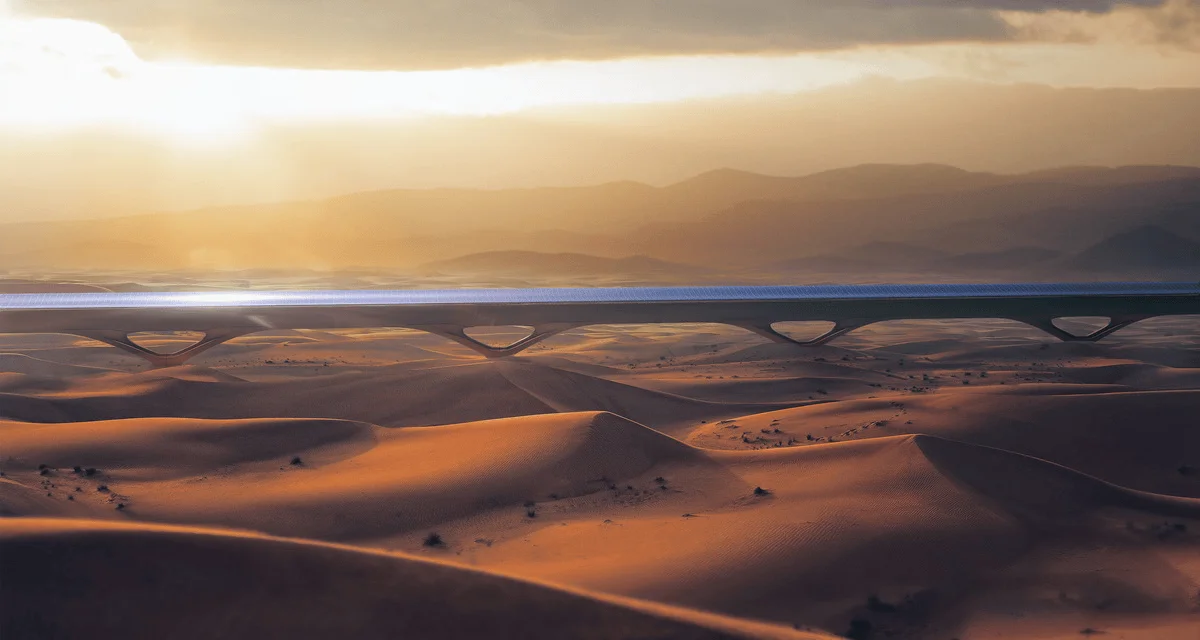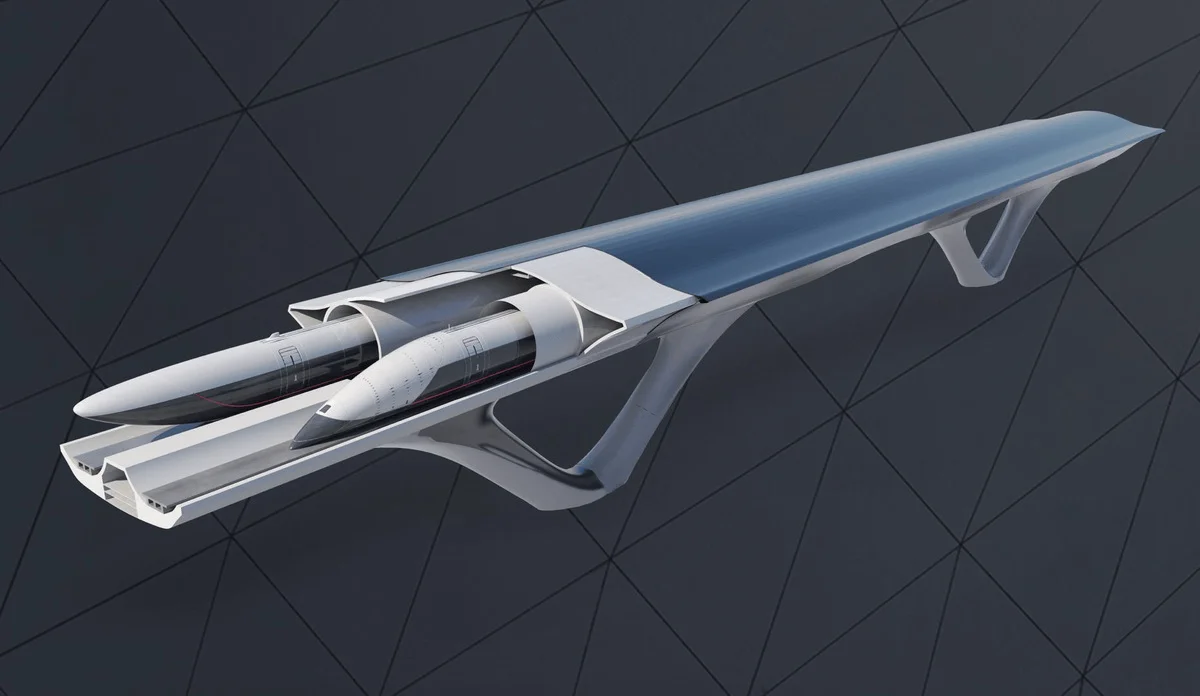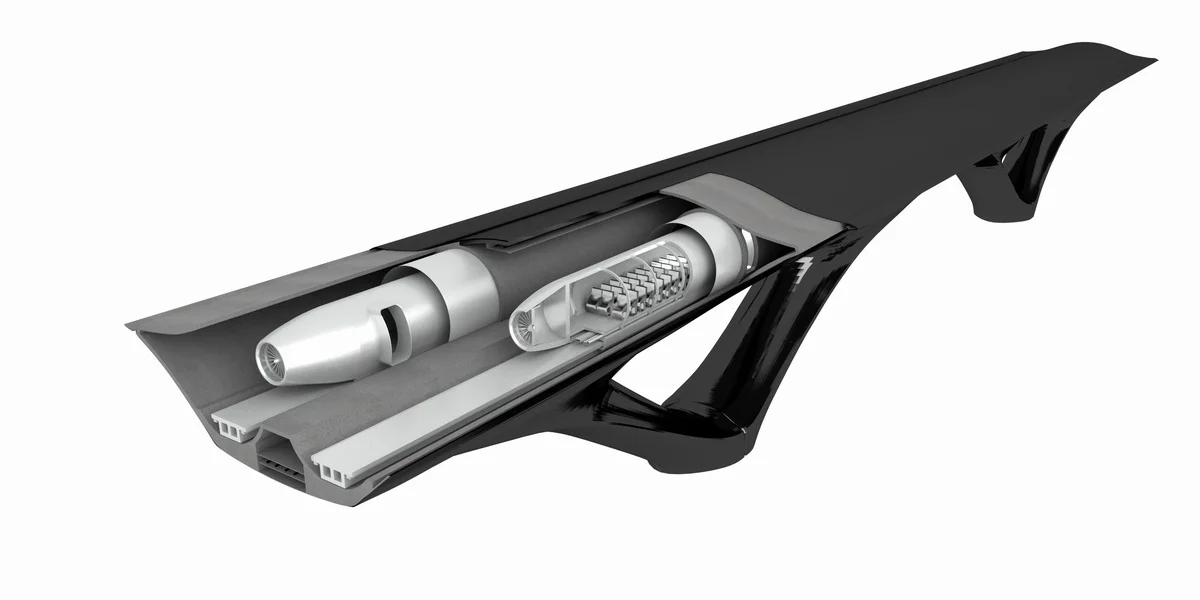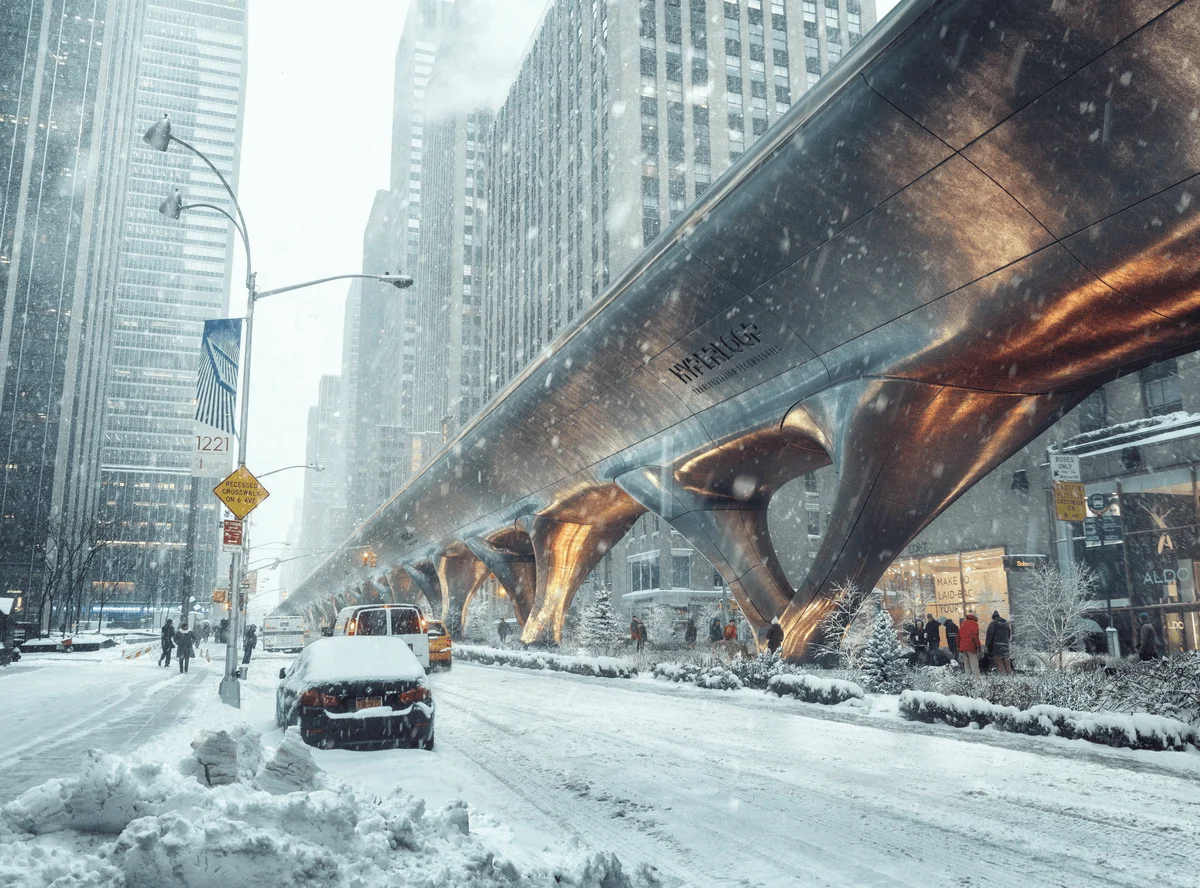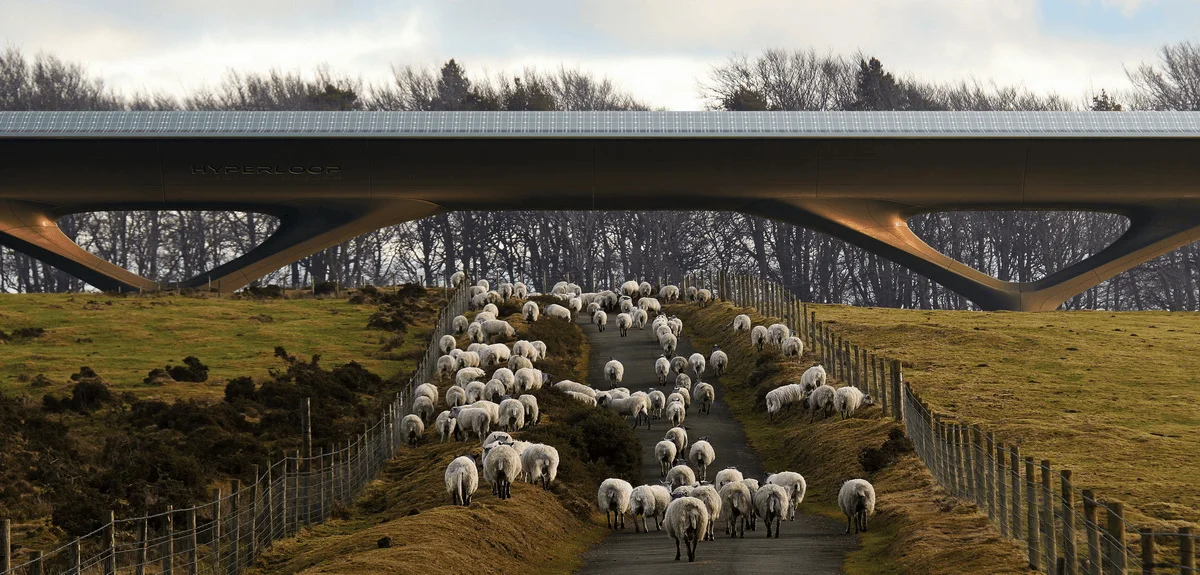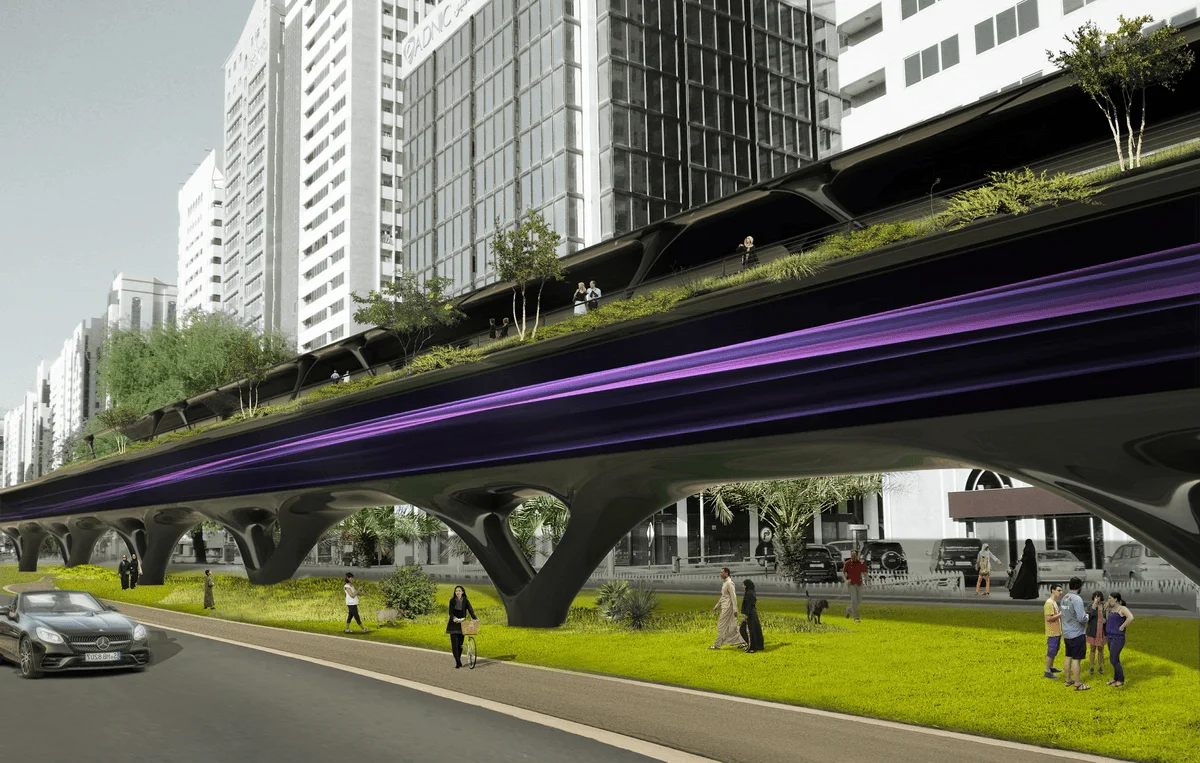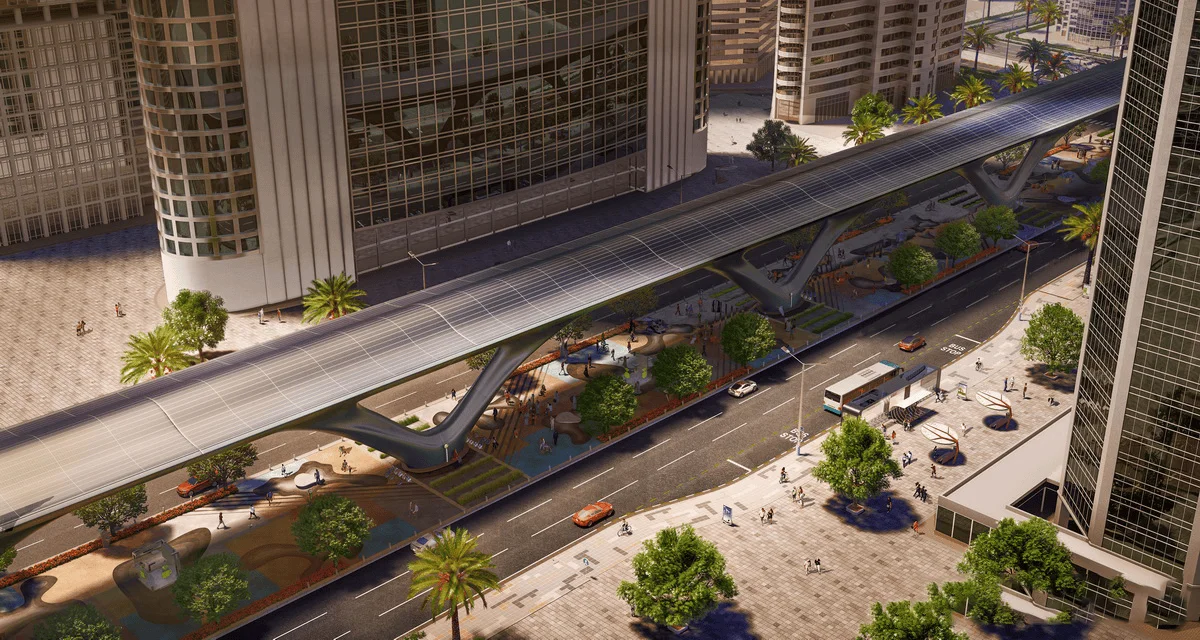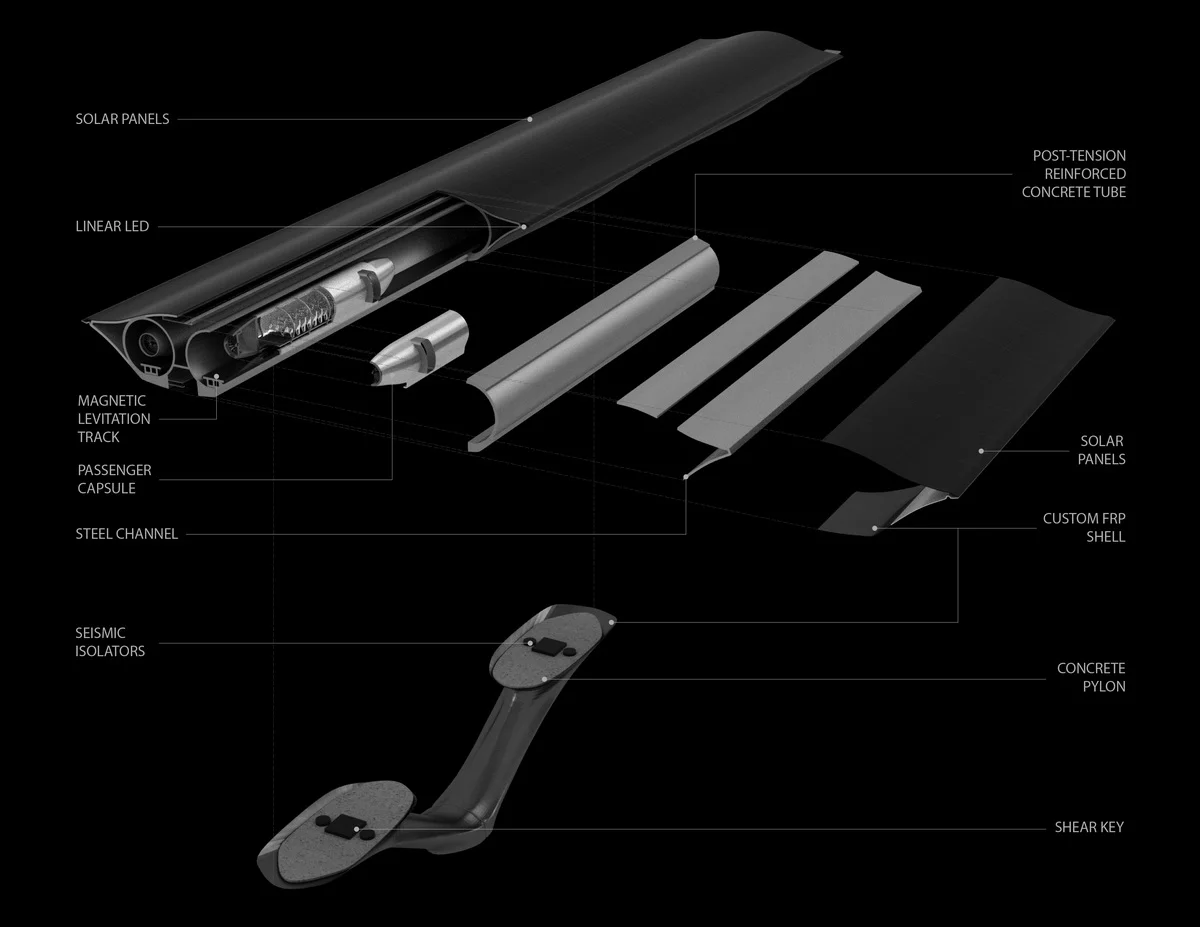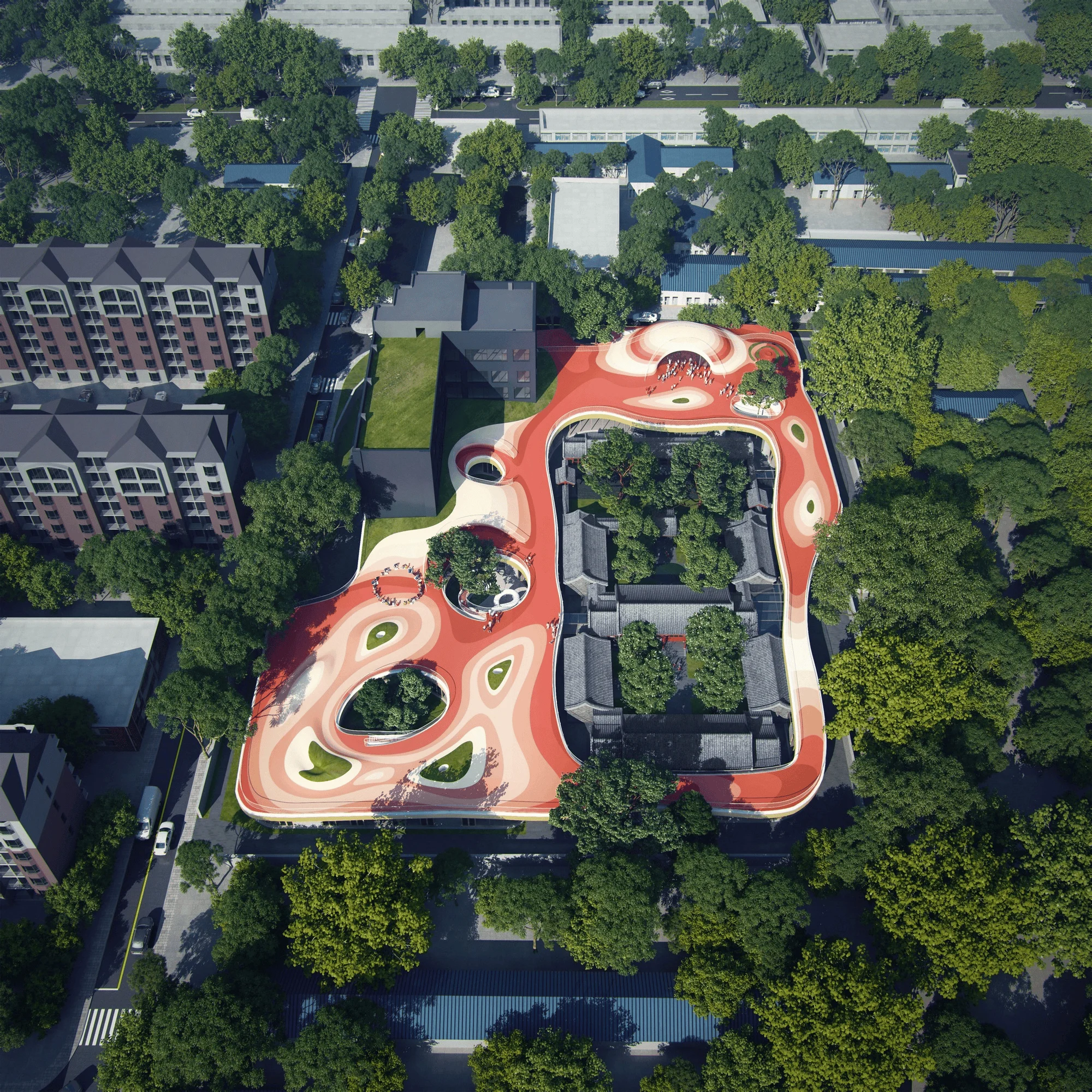As Hyperloop technology rapidly advances and more field tests are conducted, the Hyperloop is on the verge of becoming a part of our lives. While many focus on the performance of the train system, MAD is more concerned with whether the Hyperloop, besides optimizing transportation functions, can also achieve the fusion of artificial and natural environments, transforming a simple mode of transportation into an organic and sustainable new urban infrastructure.
HyperloopTT (Hyperloop Transportation Technologies) previously invited MAD to design a transit tunnel, station, and bridge tower system for the hyperloop, hoping that the design would not only meet functional requirements but also explore how design can respond to several urban problems that HyperloopTT and MAD share a common concern for: overpopulation, traffic congestion, and pollution. MAD hopes to establish a more three-dimensional connection between people and the environment through this experimental design, using the Hyperloop to promote more diverse impacts on people in an organic and energy-saving way.
The train transit tunnel designed by MAD resembles a time tunnel leading to an unknown space, and the reflective fiberglass on the surface makes it more futuristic. MAD envisions using solar and wind energy as the primary energy sources for the tunnel, station, and bridge tower system, achieving energy self-sufficiency. Curved solar panels are installed on the top of the station and bridge tower for solar power generation and storage. In some natural scenes where conditions permit, MAD has set up groups of bladeless wind turbines near the station to convert wind energy into electricity. At the same time, LED light panels powered by solar energy are installed inside and outside the tunnel, serving as information interconnectivity displays within the station.
In MAD’s design, the station and tunnel system are raised to the ground level, reducing land occupation on the ground, avoiding land competition with other ground transportation, and achieving efficient coexistence and integration of different modes of transportation.
Within the bridge tower, which is at least 6 meters high, MAD has incorporated a new type of “vertical farm” at the base. This new type of farm implements soil-less cultivation, eliminating the plant’s dependence on land. LED lights powered by solar energy provide the necessary light for plant irrigation. MAD’s collaboration with HyperloopTT began with the Hyperloop proposal at the 2020 Dubai Expo. HyperloopTT will soon build Hyperloop test tracks in Hamburg Harbor, Germany, and Toulouse, France.
Project Information:
Architects: MAD + HyperloopTT
Design Team: Ma Yansong, Dang Qun, Yosuke Sono, Lu Junliang, Matthew Pugh, Wang Tao, Chris Nolop, Nathan Kiatkulpiboone


